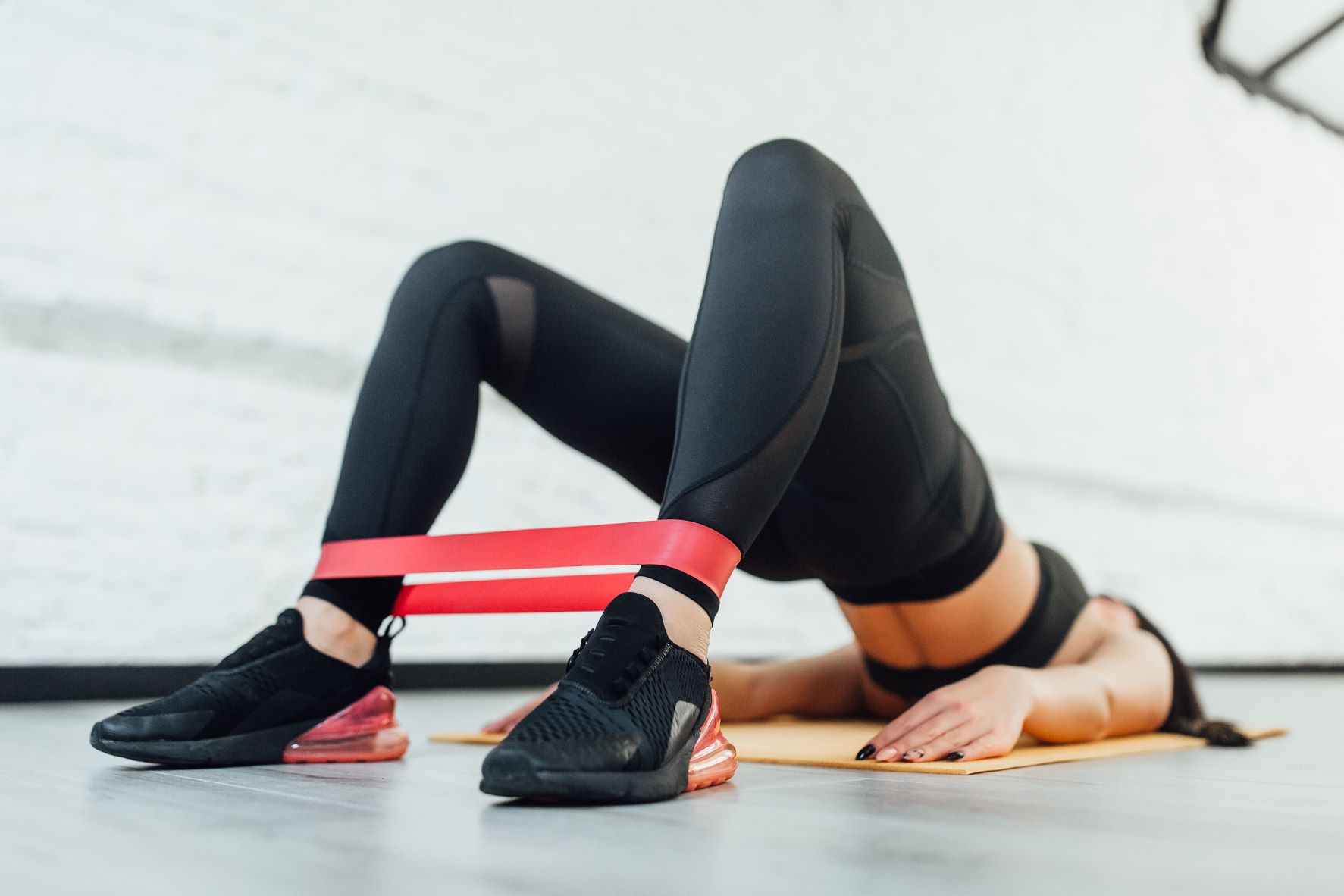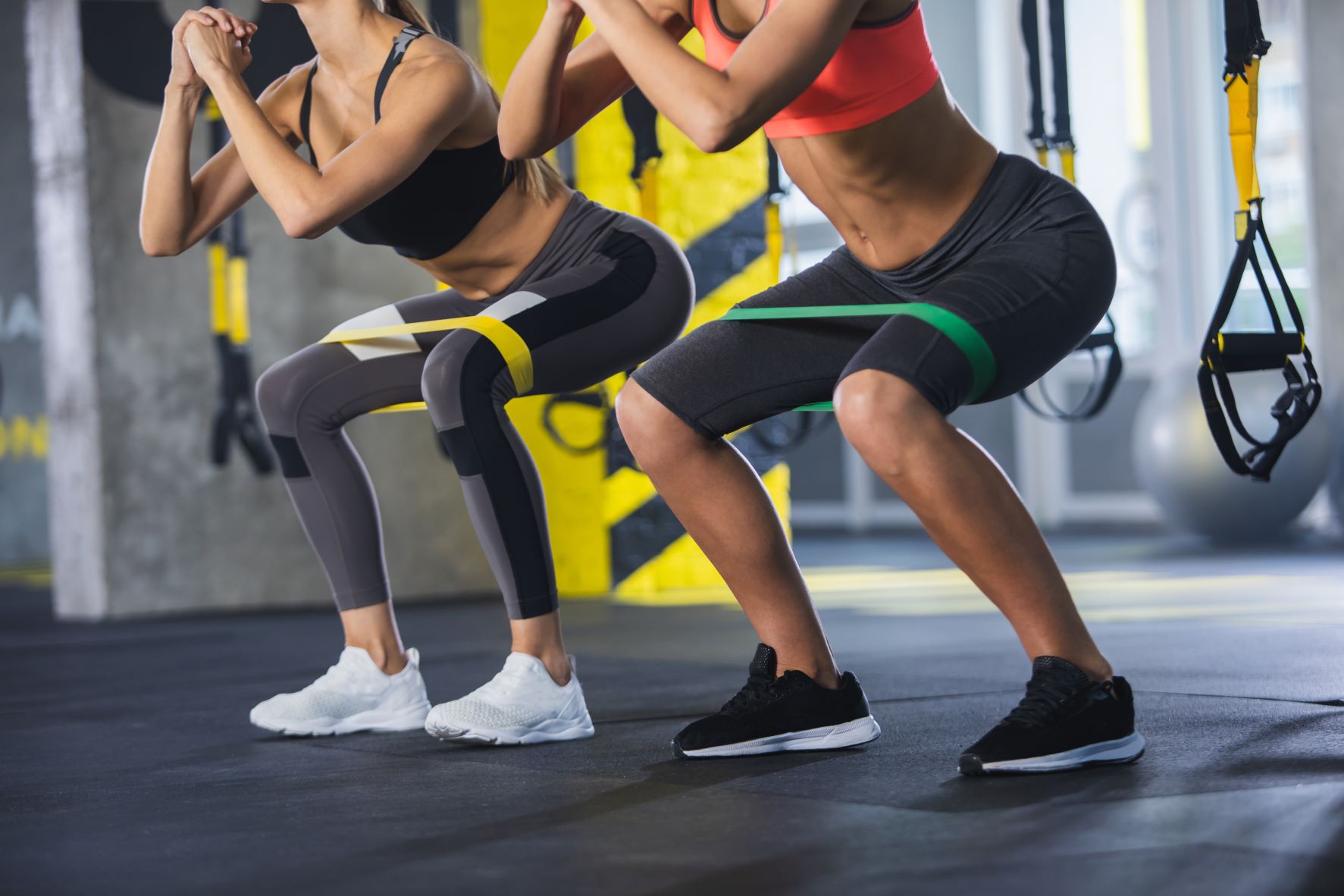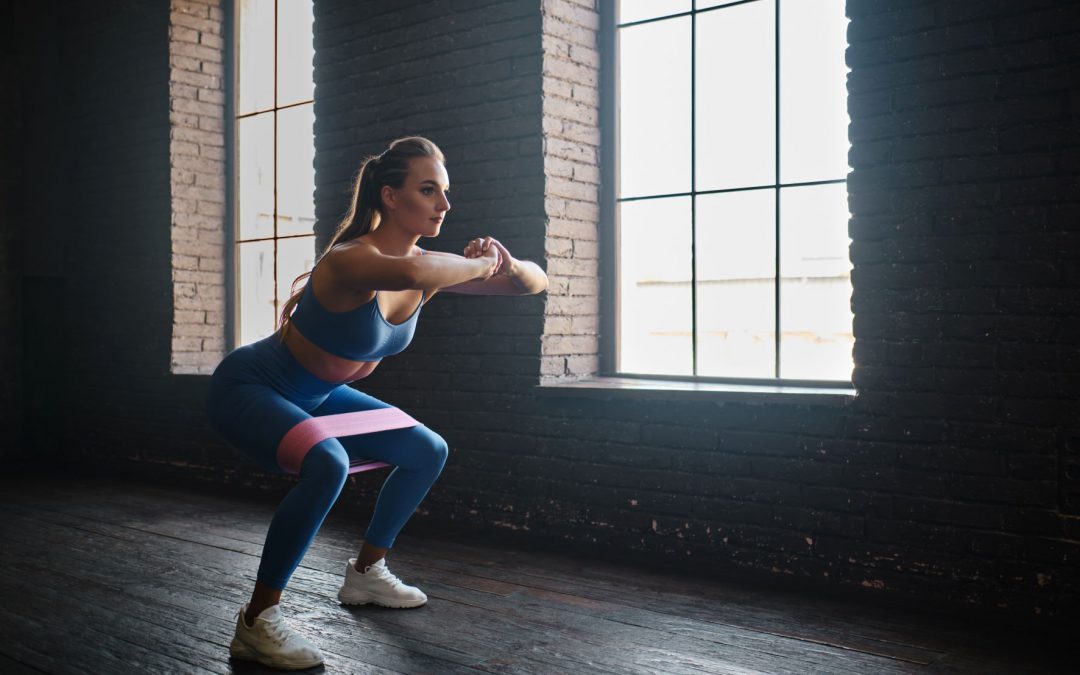Resistance bands might look simple, but they’re a fantastic and versatile fitness tool suitable for anyone (anywhere!) Here’s how to choose the best resistance band for your goal. Scroll down for three workouts to try!
What are resistance bands?
You’ve seen them before, but what are they for? These giant colourful bands are actually one of the most versatile (and portable) bits of fitness kit you can get. And they’re cheap, too!
Resistance bands can be used to make your motility work or stretch sessions more effective. They can help you do a better warm up. They can even give you a full-body toning workout! Pretty nifty for a great big elastic band!
Why do resistance bands come in different colours?
Resistance bands come in different colours depending on how much resistance they offer. There’s no standard colour system, but it will be easy to figure out which one is which by looking at the packaging and the band itself (most resistance bands have a number printed on them).
But what does the resistance level actually mean? Some resistance bands are categorised as light, medium, and firm/heavy. The light one will be easiest to use, and will offer the least resistance. The heaviest one will be toughest.
How much weight do resistance bands add?
If your resistance bands have numbers on them, this is the amount of “weight” the band will add to each movement. It’s not an exact science, because the resistance will increase and decrease as you move the band. But a 10kg resistance band will add 10kg weight at the end range of the movement.
If you choose to use resistance bands to support you in pull ups, remember that the number on the band will be the amount of support it gives you. A 65kg person using a 10kg band for pull ups should feel like their body weighs 55kgs!
How to choose the right resistance band for you
Resistance bands look pretty, but definitely don’t choose one based on colour. As we’ve mentioned, each band adds a certain amount of weight. You should choose a band that is suitable to your strength, your fitness level, and the exercise you want to do. You’ll probably need a different band for lat pull downs that you will for biceps curls! This is why resistance bands tend to come in packs. Most people end up using more than one!
5 ways to use resistance bands
1. Warm up
You do warm up before a workout – right? Bands make it much easier to get a good warm up that preps your muscles and joints for your main workout. Research tells us that dynamic stretching is the best type of stretching to do before training, and resistance bands are ideal for this type of movement. Doing dynamic stretches with resistance bands, that are similar to the movements in your main working, will get your heart rate up without tiring you out.
Moves to try: overhead press, crab walks

2. Muscle activation
Activating your muscles as part of a warm up will “wake them up” and get your brain connected to your muscles ahead of your workout. This leads to a better training session because everything is switched on. You can use a light resistance band to aid muscle activation, because the band will provide a small amount of resistance for you to work against.
Moves to try: glute bridges, hamstring curls
3. Mobility
Mobility is an active form of stretching that benefits your muscles, joints, fascia and connective tissue. It’s an important part of your workout schedule, especially if you lift weights or do repetitive movements like running. Resistance bands can really help you get more from your mobility work, by helping you get into end-range positions.
Moves to try: shoulder stretch with hands clasped behind your back, extended quad stretch
4. Static stretching
All this talk of dynamic stretching and mobility work might make you think there’s no place for static stretching in your fitness schedule. That’s not true. Static stretching is best done after a workout (when your muscles are warm) or as part of a mobility workout or yoga flow. Resistance bands can help you get into deep static stretches and then pull a little further to increase the stretch.
Moves to try: seated forward fold, upper back stretch

5. Toning
Can you really get a good toning workout just using bands. Definitely! Think about how effective a bodyweight workout can be, now add resistance bands. You don’t have to use dumbbells and weights to get toned. You can use resistance bands to tone every muscle group in the body from legs and glutes to arms, shoulders and upper body.
Moves to try: overhead press, bent over row
What are the best resistance band workouts?
Lower body tone-up
Do this circuit x 4
Banded pulsing half squat – 20 reps
Crab walk – 20 steps each direction
Banded deadlift – 15 reps
Banded front squat – 12 reps
Lying clamshell – 12 reps each side
Banded glute bridge – 15 reps
Upper body sculpt
Do this circuit x 3
Overhead press – 15 reps
Bent over row – 15 reps
Standing chest press – 12 reps
Lateral raise – 12 reps each side
Banded biceps curl – 20 reps
Banded triceps extension – 15 reps
Abs and core
Do this circuit x 2 and finish with a 30-60 second plank hold
Banded bicycle crunch – 20 reps
Banded plank hand taps – 20 reps
Banded mountain climbers – 20 reps
Banded bird dog – 20 reps
Can you take resistance bands to the gym?
Lots of gyms will have resistance bands for you to use, but you might prefer to take your own (after all, they don’t take up much room in your bag!) You can definitely take resistance bands to the gym and use them in your workout.
Check out Hussle’s website to find a great gym near you. One network. Any location. Thousands of gyms. Zero contracts




